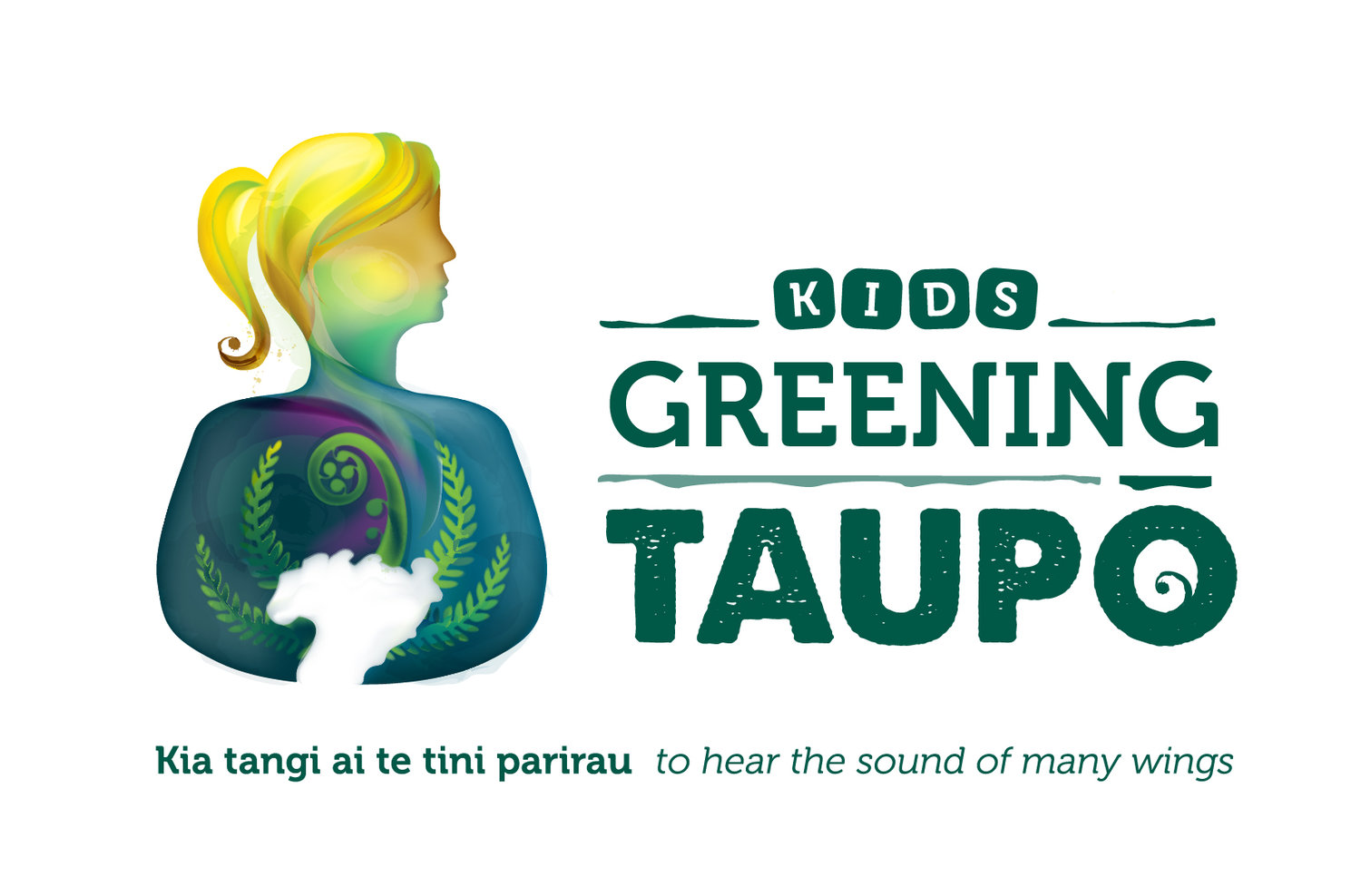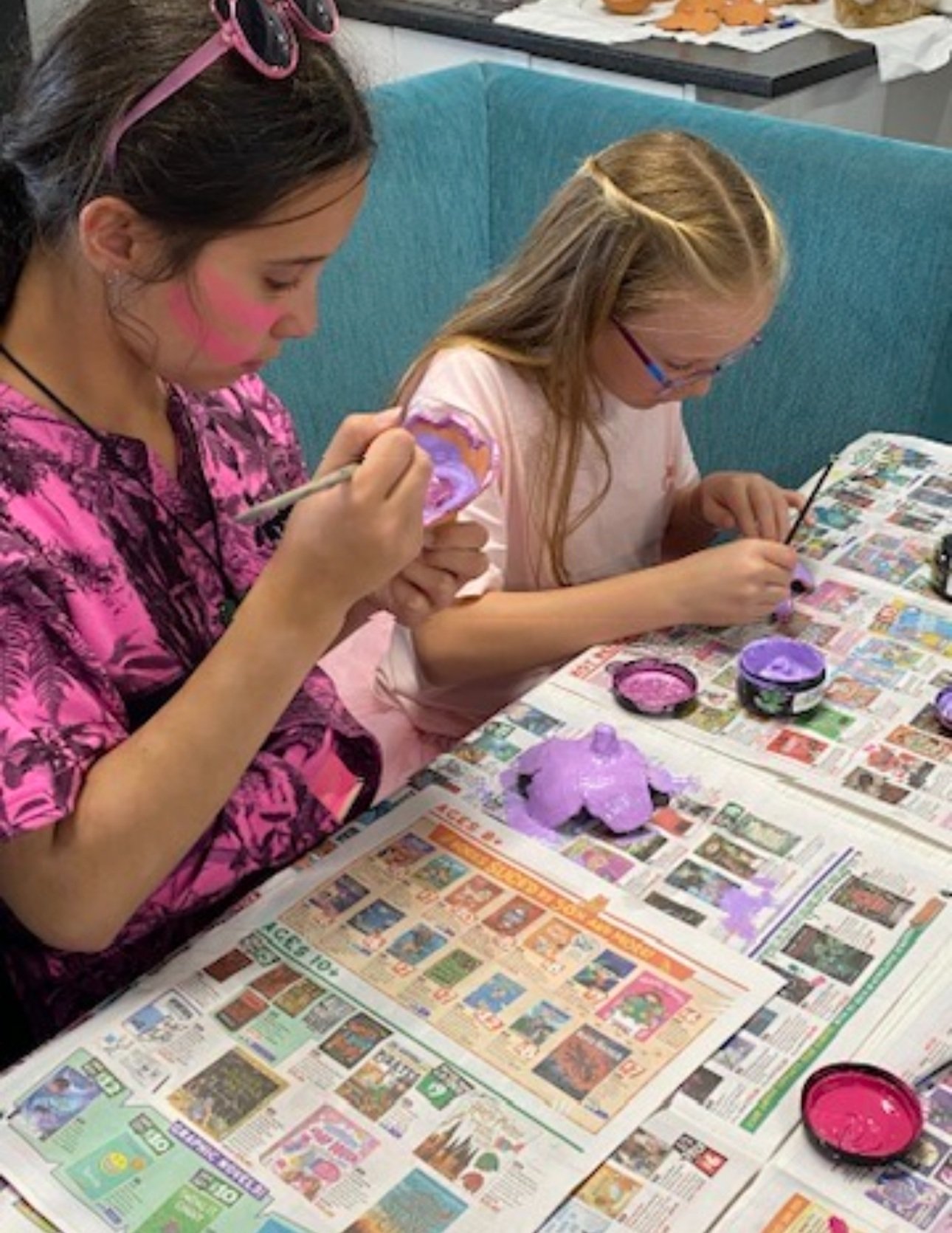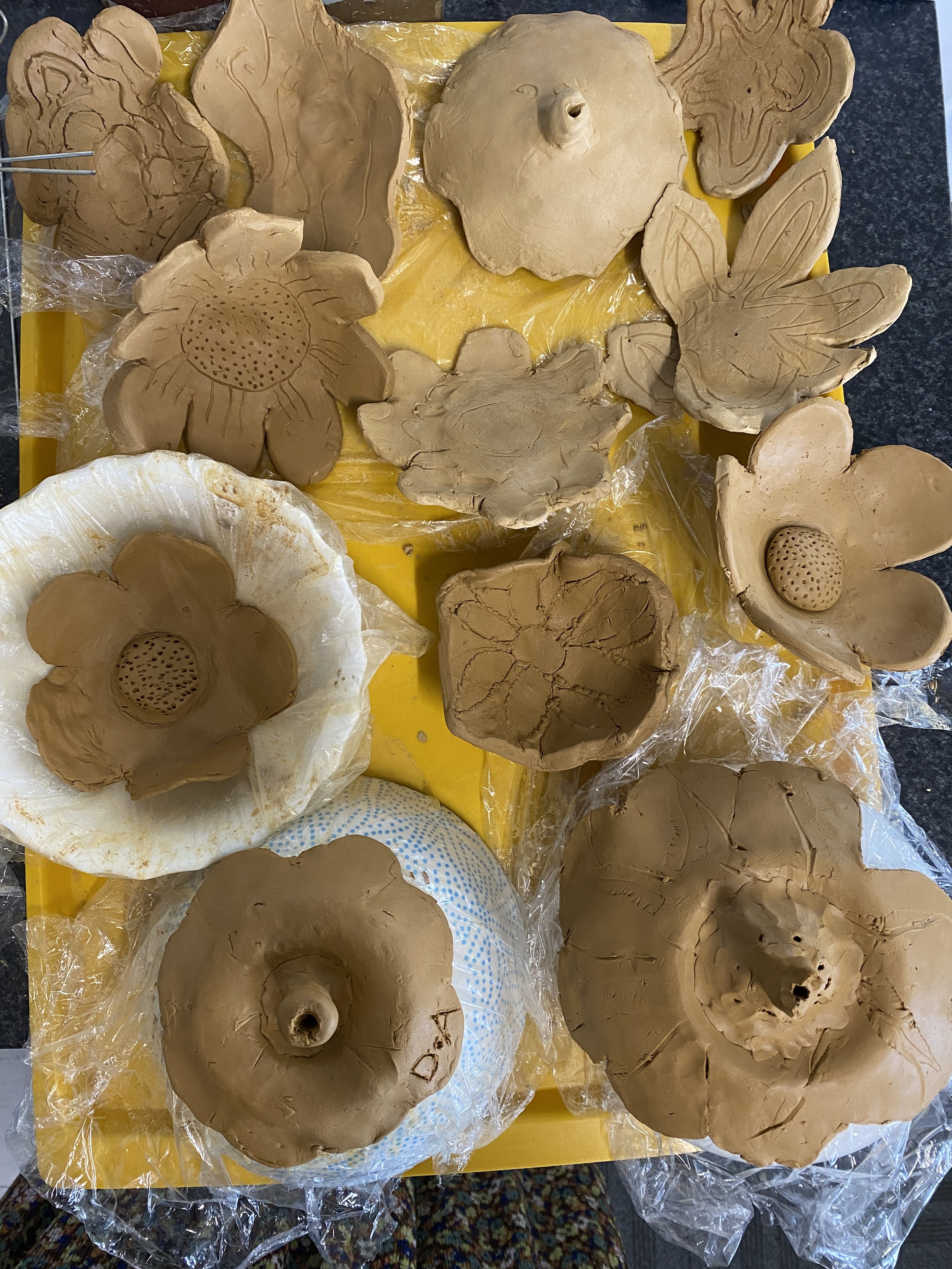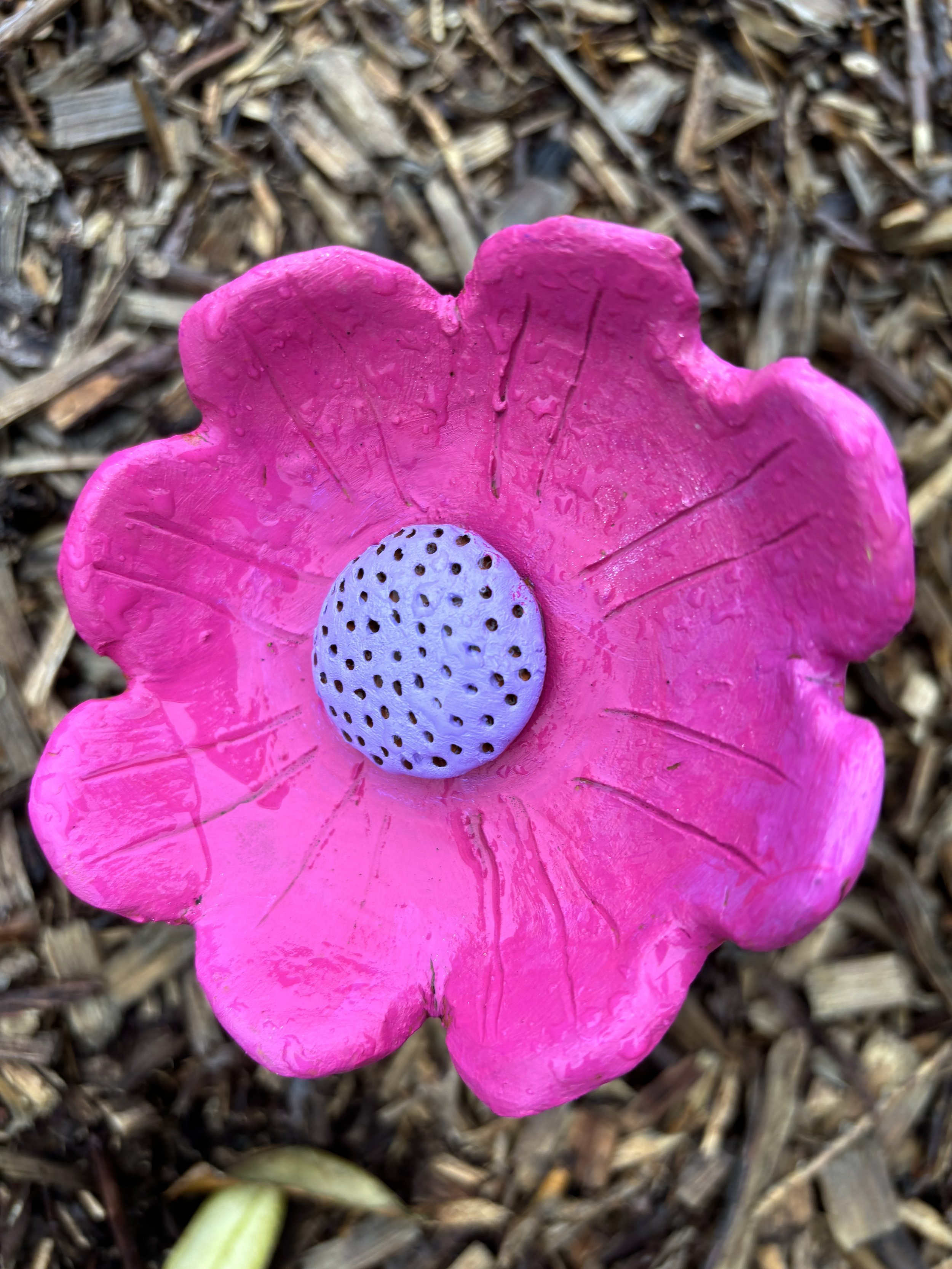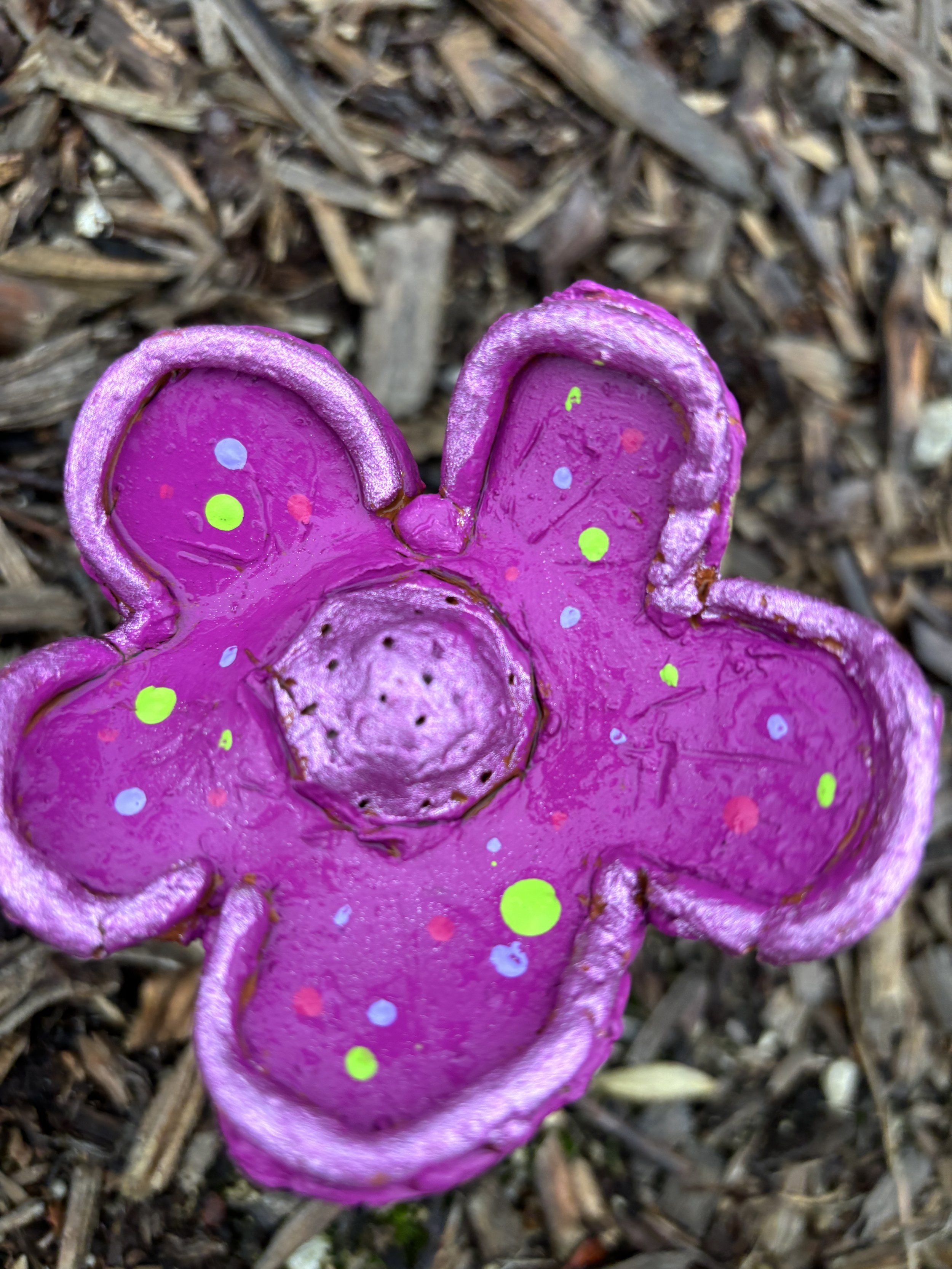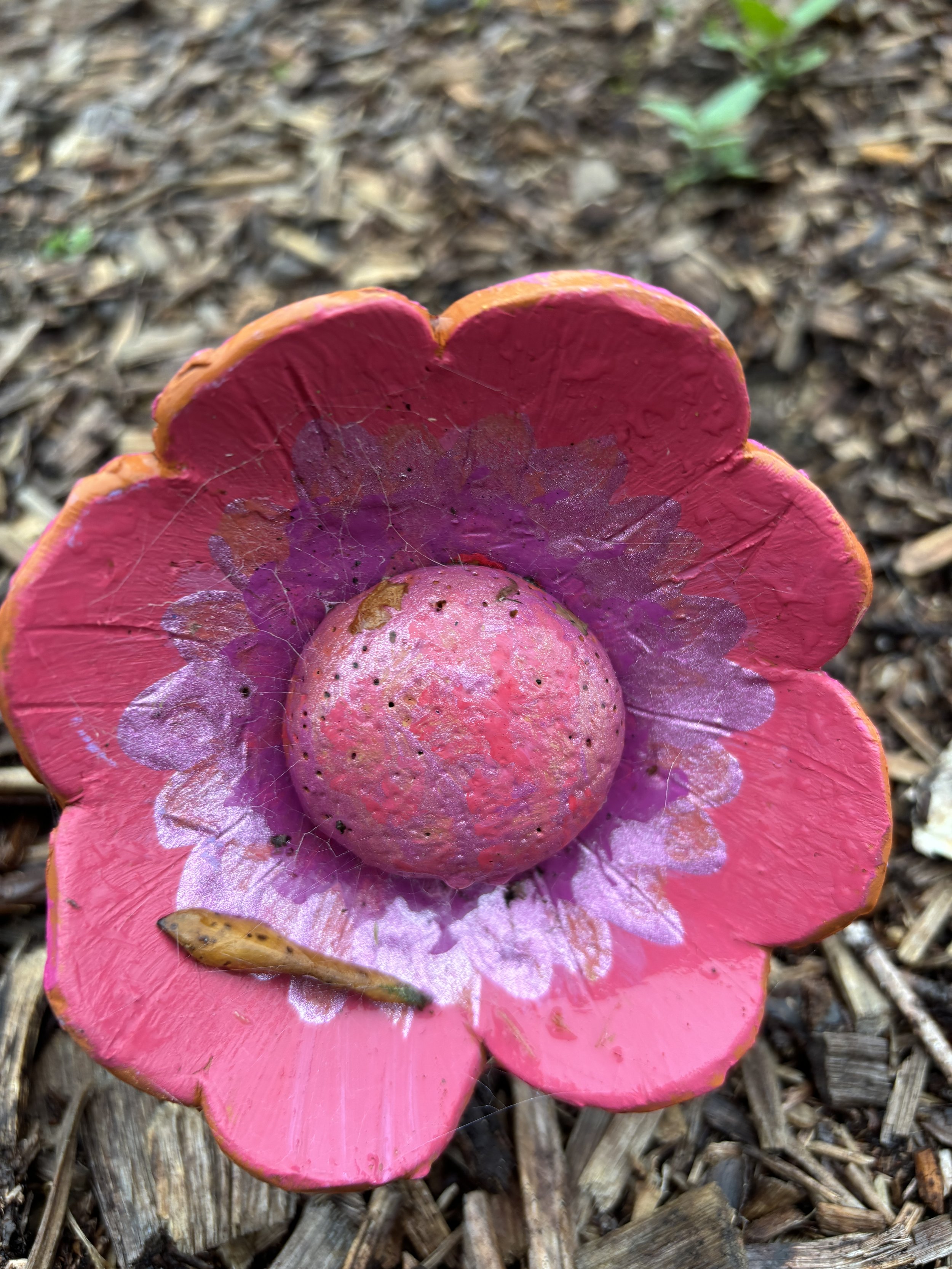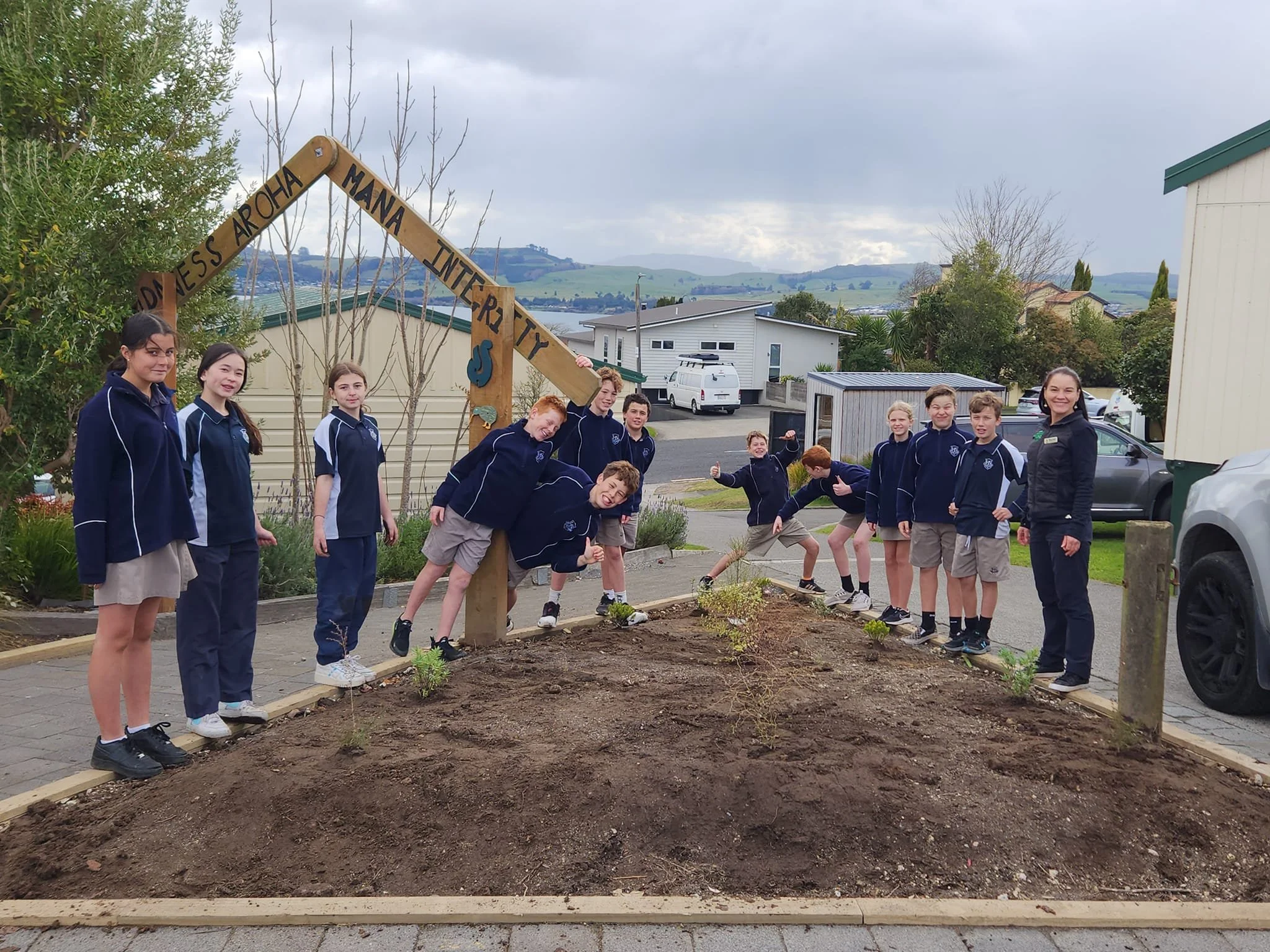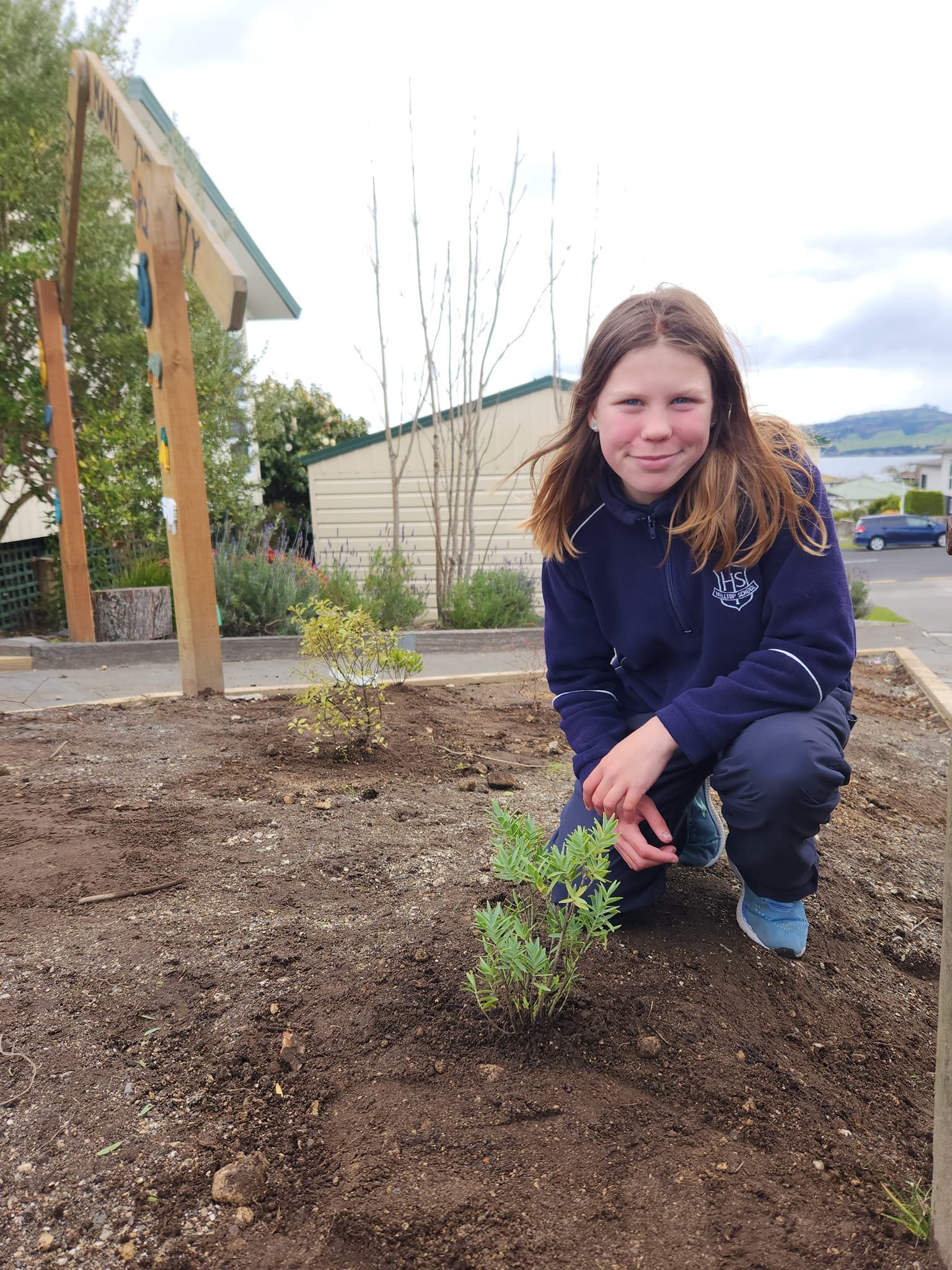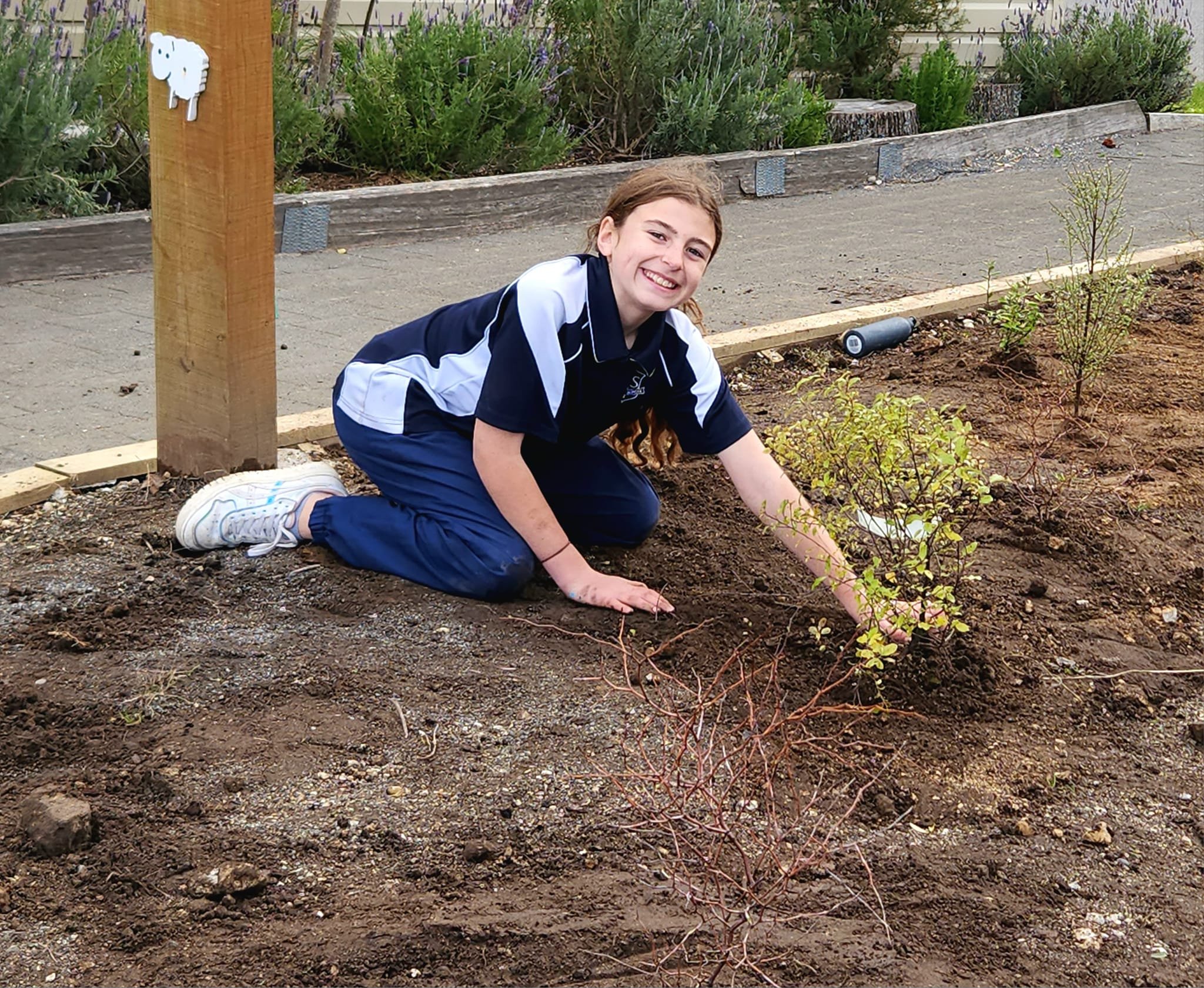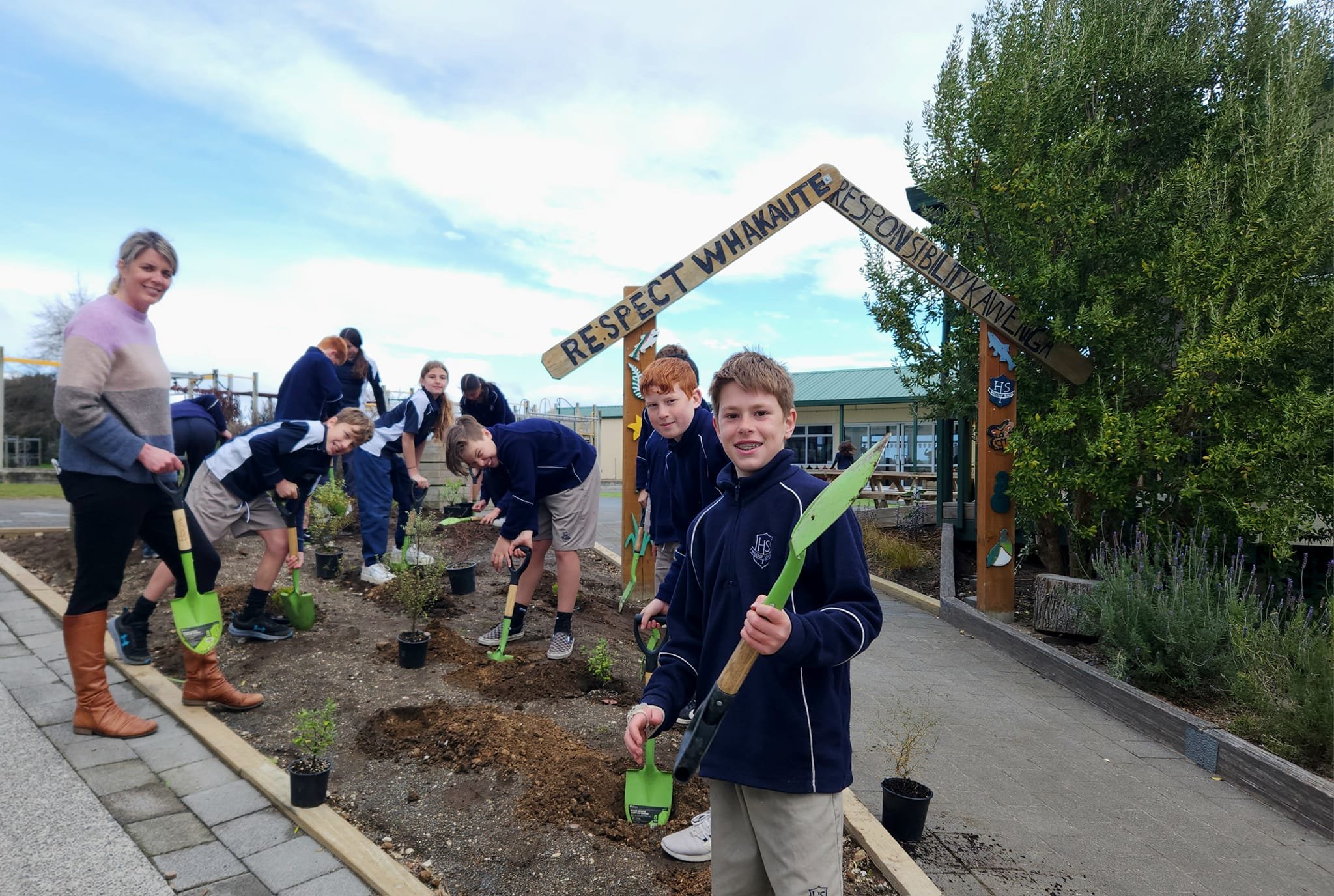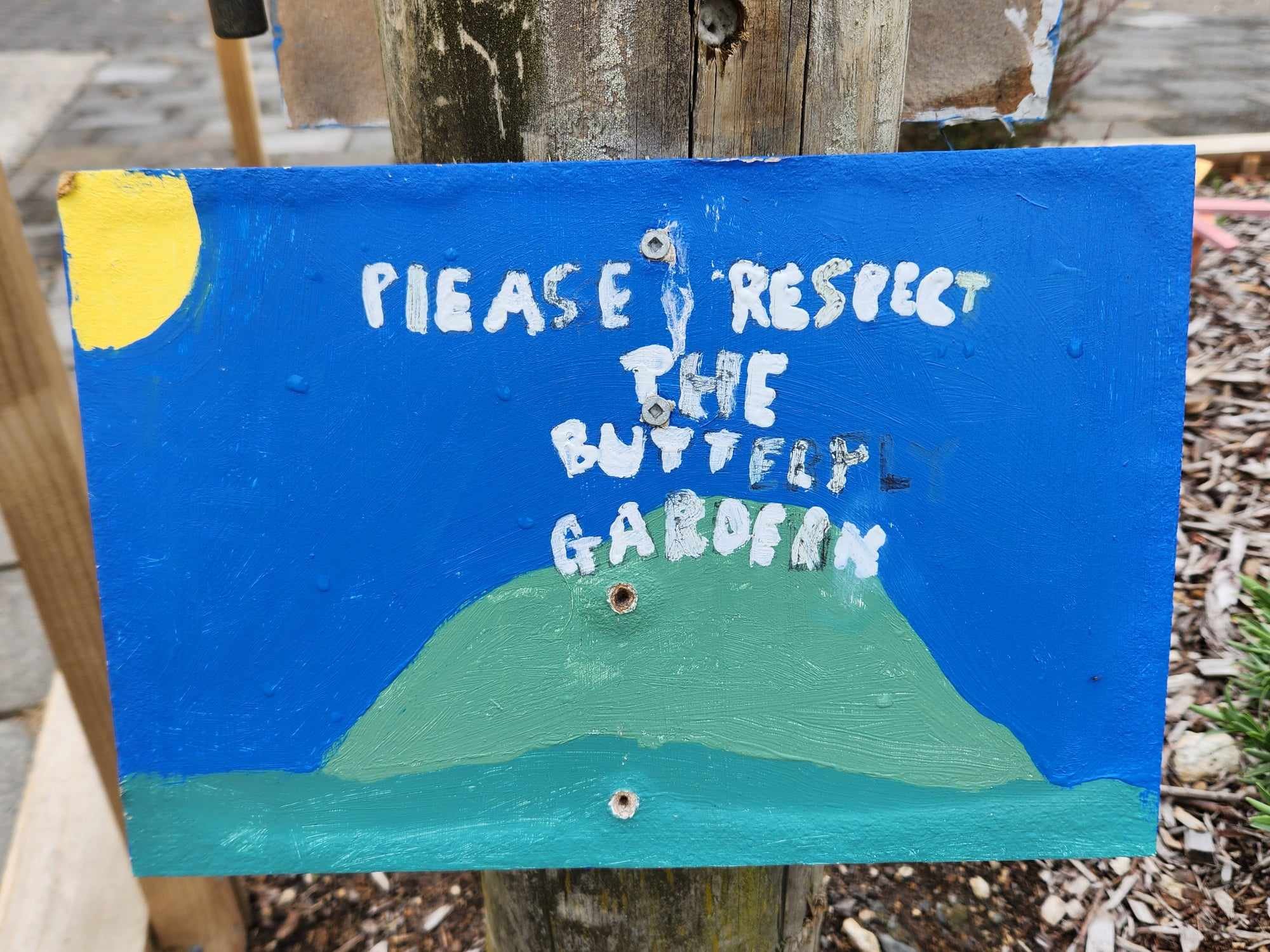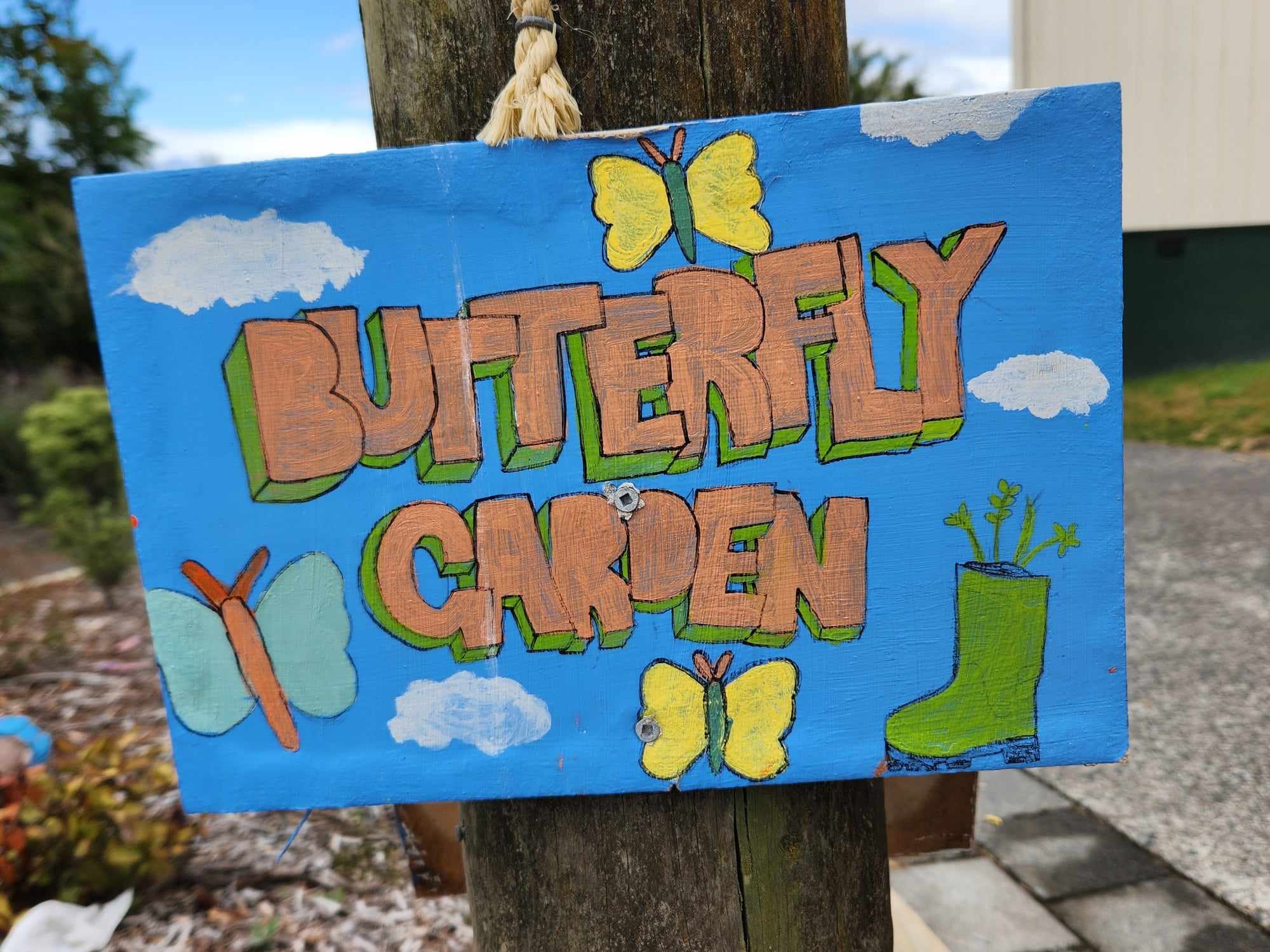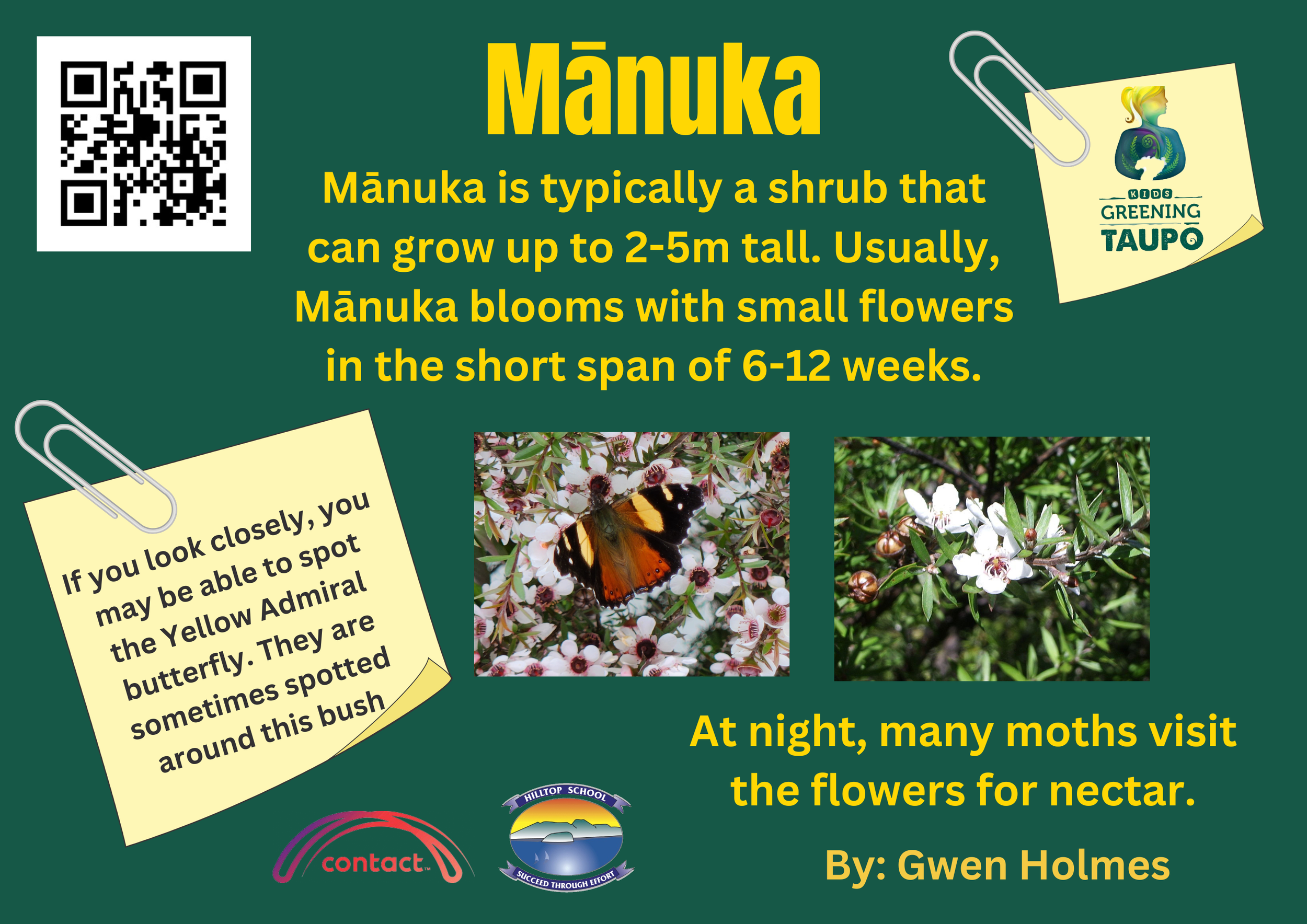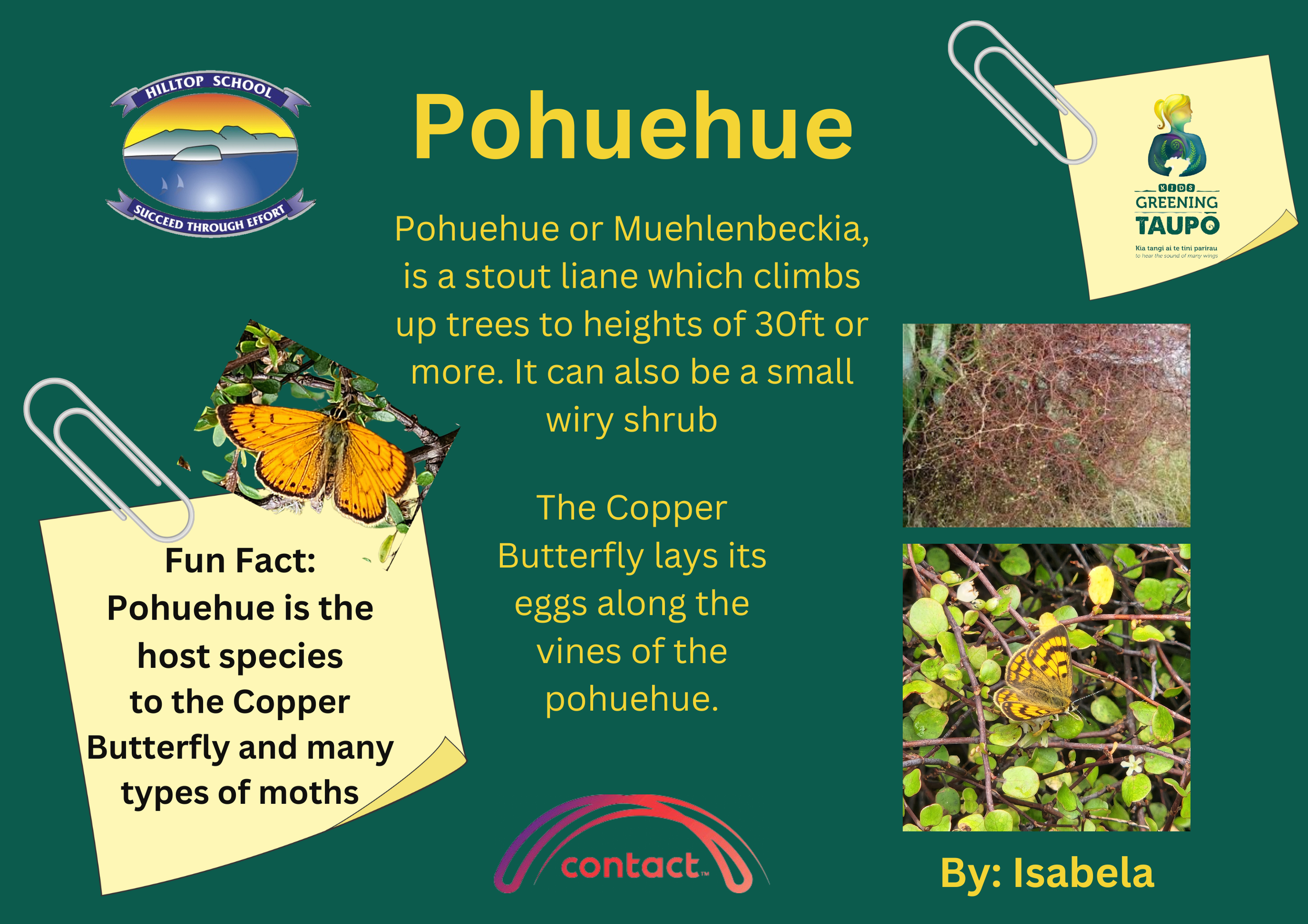Hilltop Butterfly and Moth Habitat
Check out the beautiful painting of a pūriri moth on the corner of the street!
In 2019 Hilltop School started its journey with Kids Greening Taupō with a native restoration planting on Taupō District Council land neighbouring the school, on the aptly named Puriri St! One of the long-term goals was to bring the Pūriri moth to the school by planting hundreds of native trees on an unused piece of land. In 2022, KGT student leaders Lizzie and Pipi extended this work and led a fantastic project to encourage native pollinators to come to Hilltop School. This involved planting lots of flowering plants such as mānuka, hebes, rengarenga lilies, and kōtukutuku, along with putaputawētā to attract pūriri moths. You can read more about this habitat for native pollinators here.
In 2023, school science teacher Marni Lynn, saw an advertisement for a Butterfly and Moth Habitat Award and thought this could be a great opportunity to extend the learning of the prior years even further. Using the competition as a way to motivate the students to research about how to create a more specific butterfly habitat was a great idea! All six of the school’s Year 7-8 classes worked with Marni during the year and the pollinator and butterfly gardens were used as a learning context for all of their projects. Other classes created lizard habitats, learnt about introduced weeds and removed them from the grounds, and learnt about native plants, then creating informative signage about them to teach others.
Cyclone Gabrielle had felled a large tree at the entrance to the school and Marni’s students thought that it would be the perfect place to create their new garden. This area receives maximum sunlight and is sheltered by school buildings. They knew that these were important criteria for a butterfly habitat. They set about researching what else was needed for a butterfly and moth friendly habitat. Then the next step was to make a video application to Kids Greening Taupō (KGT) for native plants and to also ask for funding to create pottery butterfly feeders. With funding secured through the KGT Contact Energy Take Action Fund, the beautiful pottery flowers, that would double as water dishes for butterflies, were created, painted in bright colours and then fired by local potter, Didi Chapman.
A copper butterfly on pōhuehue
A native yellow admiral butterfly feeding on mānuka
Next, the tamariki researched which species of native plants would be needed to attract native moths and butterflies. They were surprised to learn that Aotearoa is home to thousands of moths and that almost all of our native plants are host species for different ones. They also learnt that very specific plants were needed as hosts for native butterflies. One of these is stinging nettles for admiral butterflies! After discussion around the health and safety involved, they decided to stick with pōhuehue for copper butterflies. They also learned that common blue butterflies needed clover, which there was lots of around the school! When the caretaker offered them horopito plants, they researched and were surprised to learn that it is a host plant for 3 looper caterpillars and 5 leaf-tyer moth caterpillars! So those went in the garden too. It really did show them that all of our native plants are important for the many native moths in Aotearoa.
The next task was to research native plants that would provide nectar for the butterflies and moths. There was a lavender garden with dahlias and other exotic flowers already on the site, which they decided to retain and utilise. For local advice, they contacted Taupō ecologist, Alana Delich and asked about the best native plants to encourage butterflies in Taupō. The students also used the Kids Greening Taupō website and the Moths and Butterflies of New Zealand Trust website, along with Andrew Crowe’s books and other resources to find information. They decided to plant mānuka, korokio, kōwhai, and a variety of hebes to feed the native butterflies and attract them to the garden. They even decided a couple of kōhuhu, would be good to plant, as they had learned that these clever plants release their scent at night to attract moths for pollination.
Rachel, the coordinator from Kids Greening Taupō, arrived with the plants that they had requested and showed the students how to plant properly. She also talked to the children about how plants lure butterflies, moths and other pollinators in with nectar and then cover them in pollen and ‘trick’ them into pollinating their flowers so that they can make seeds. The students thought that was pretty clever! After, discussing a plan for where to put each plant, the students got to it! The plants were put in the ground, mulch was laid and they were carefully watered and weeded for the rest of the year.
As part of their Science classes, students looked into how to reuse and recycle items in their garden. A rainwater collection system was designed and installed using old pipes attached to the garden shed and an old kitchen bench was used as a potting up table. Glass houses were made from recycled skylights to help grow frost sensitive plants and extend the growing season. Cans were painted and hung from a pou, and then planted with flower seeds to feed butterflies in the summer time.
The artwork done by students with support from local artist, Sue Graham was installed.
Kids Greening Taupō taught the students about the history of biodiversity in Aotearoa and the impact that introduced predators are having on our invertebrates, lizards and birds. The students decided to make tracking tunnels and trap boxes. They were surprised to catch a rat in the garden before they even put bait in the trap!
March 2024- The plants are growing!
In 2024, students continued this project by designing signage about the native plants in the garden. The signs say which butterflies and moths each plant is host to, or attracts. These will be printed onto outdoor signage material and proudly displayed in the butterfly garden. The students are also looking into sourcing rocks for the space after hearing that some native butterflies like to rest on rocks. We will keep you updated as this project continues to grow and evolve!
